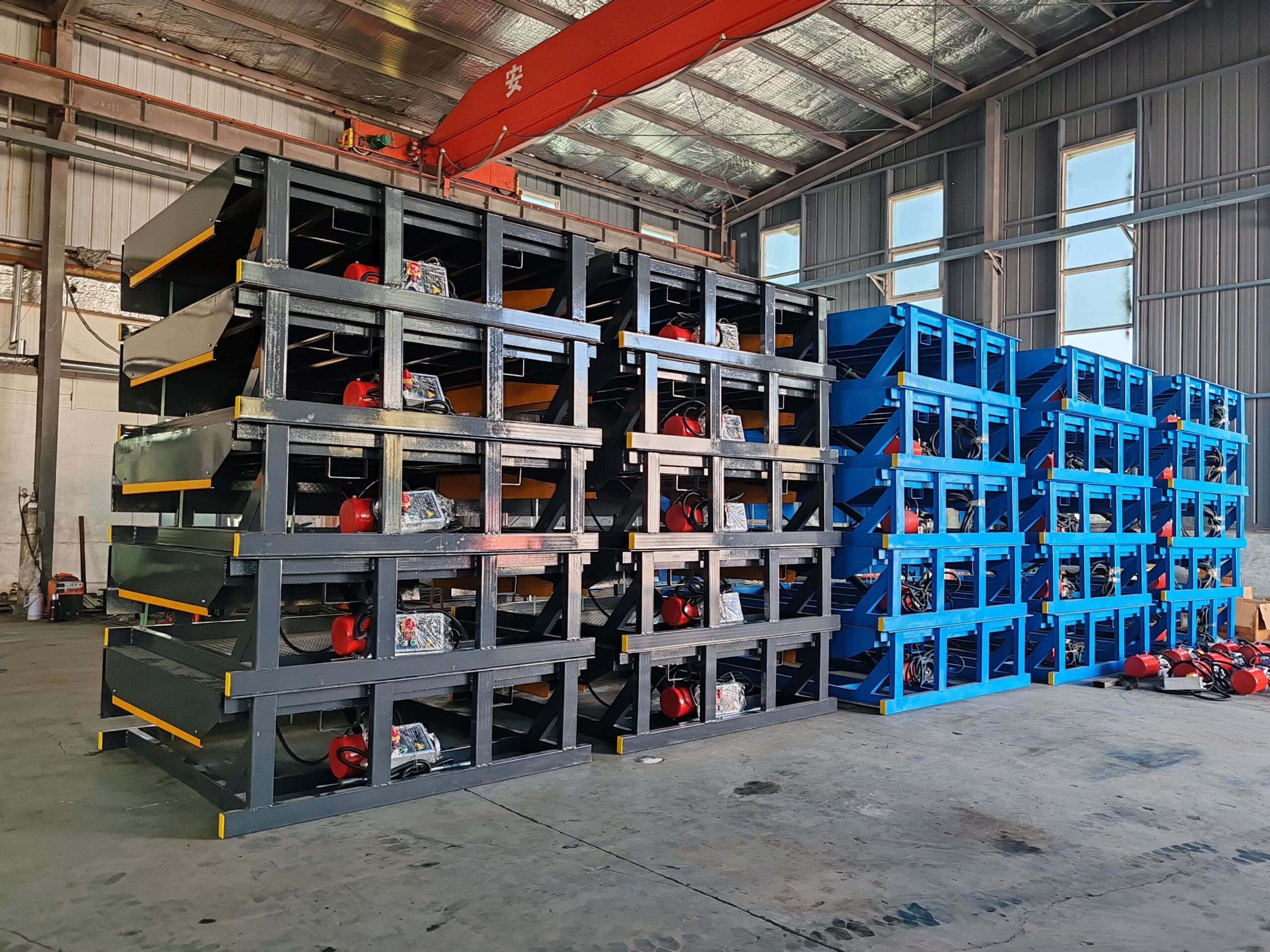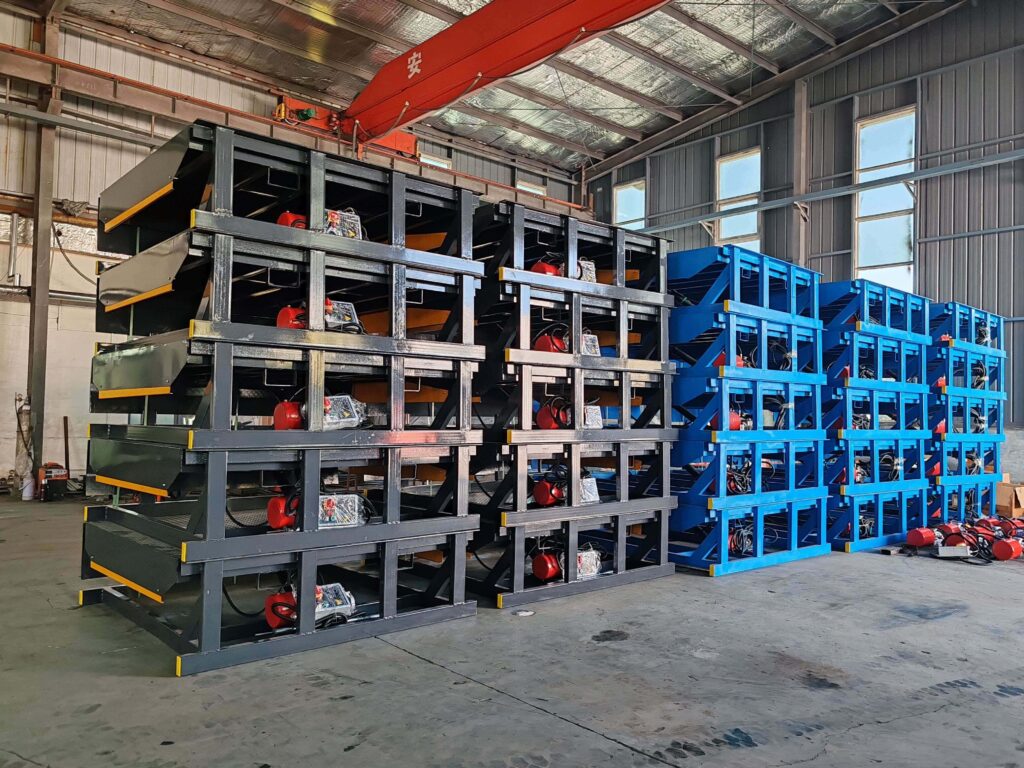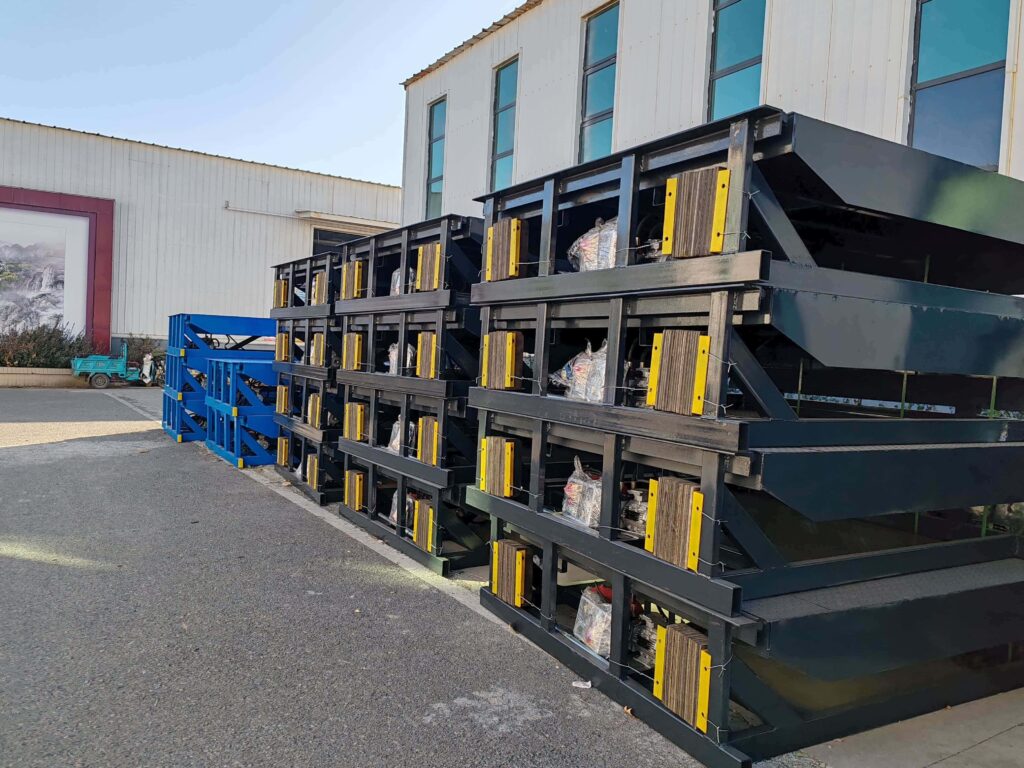
- Hengjinrui Lift
- May 22, 2025
- Blog
- 0 Comments
In modern logistics, warehousing, and manufacturing industries, the efficiency of loading and unloading directly impacts operating costs and productivity. Dock levelers—as a critical connection between transport vehicles and loading docks—have become essential infrastructure in logistics centers, warehouses, and industrial facilities. This article provides a comprehensive introduction to dock levelers, including their definition, types, applications, and advantages in practical use.
What Is a Dock Leveler?
A dock leveler is a device used to bridge the height difference between a warehouse dock and the rear of a transport vehicle. Its main function is to create a safe and smooth transition between the loading platform and trucks of varying heights, enabling forklifts or pallet jacks to move in and out of the vehicle freely and efficiently.
Main Types of Dock Levelers
Depending on the structure and driving method, dock levelers are generally classified into the following types:
Mechanical Dock Leveler
Operated by springs and a mechanical lever system, activated by pulling a handle manually. It’s cost-effective but requires more physical effort and is gradually being replaced by hydraulic models.
Hydraulic Dock Leveler
Powered by a hydraulic system and controlled by push buttons. It offers ease of operation, high safety, and is the most widely used type today—ideal for high-frequency, heavy-duty applications.
Electric-Hydraulic Dock Leveler
An advanced version with integrated electrical controls for automatic or remote operation. Can also be connected to smart logistics systems for digital management.
Edge of Dock Leveler
A smaller version installed directly at the edge of the dock. Suitable for locations with limited space or low loading frequency. More affordable and ideal for light-duty operations.
Working Principle of a Dock Leveler
The dock leveler is typically installed at the loading dock of a warehouse. During use, the platform is raised and the lip is extended to dock with the rear of the truck via hydraulic or mechanical means. Then the platform automatically lowers to match the truck bed height, forming a continuous path for forklifts to enter the truck.
After loading/unloading is completed, the lip retracts and the platform returns to its original position, ready for the next operation.
Typical Application Scenarios
Large logistics centers: Frequent loading/unloading operations require efficient and safe equipment.
Manufacturing plants: For inbound raw materials and outbound finished products.
Cold chain logistics: Quick transfer between dock and refrigerated trucks to minimize temperature loss.
Retail distribution centers: Rapid turnover of goods demands reliable dock access.
Airports and ports: Seamless cargo transfer between transport vehicles and storage areas.

Key Advantages of Dock Levelers
Improved Efficiency
Dock levelers significantly reduce loading/unloading time, minimize truck waiting time, and increase overall logistics efficiency.
Enhanced Safety
Unlike traditional portable ramps, dock levelers come with anti-slip surfaces, safety locks, fall protection, and hydraulic safety systems—minimizing the risk of accidents.
High Adaptability
Height-adjustable to suit various truck models without the need for separate tools or manual repositioning.
Reduced Labor Cost
Automated hydraulic operation means one person can control the entire process with minimal effort.
Durable and Low Maintenance
Made of high-strength steel and equipped with sealed hydraulic systems. With proper maintenance, service life can exceed 10 years.
Professional Image

A modern dock leveler demonstrates a company’s commitment to operational excellence, safety, and professional logistics management.
Key Parameters to Consider When Choosing a Dock Leveler
Rated Capacity: Common options include 6T, 8T, 10T, and custom heavy-duty options up to 40T or more.
Platform Size: Typically 2000mm wide, with length adjustable based on site conditions.
Lip Length: Generally ranges from 300mm to 500mm for effective bridging.
Lifting Range: Commonly ±300mm to ±500mm.
Power System: Hydraulic or electric-hydraulic recommended for efficiency.
Surface Finish: Non-slip steel tread plates with anti-corrosion coatings.
Development Trends of Dock Levelers
With the rise of smart factories and automated warehouses, dock levelers are evolving towards smarter and safer systems:
Integration with WMS: Automatically adjusts to truck types and dock assignments.
IoT & Remote Control: Monitor and operate via mobile app or PC.
Energy Efficiency: Low-power hydraulic systems to reduce energy consumption.
Modular Design: Faster installation, easier maintenance, and customizable configurations.
Dock levelers are more than just loading equipment—they are a vital bridge between trucks and warehouses. A well-chosen dock leveler improves logistics speed, reduces costs, enhances safety, and boosts corporate image. For companies aiming to optimize warehouse and transport operations, investing in a high-quality dock leveler is a wise decision.





